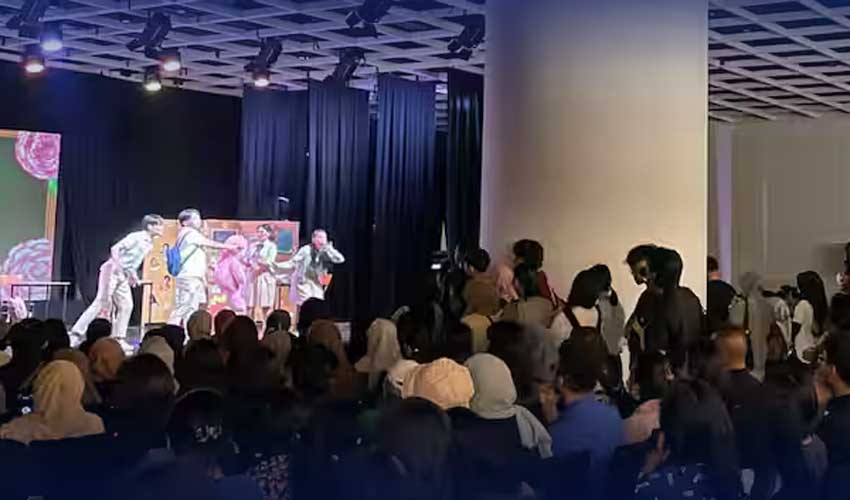Involving over 60 deaf actors and crew members aged 16 to 40, the musical took three months to prepare. At a Jakarta theatre, the music pulsed from the speakers as a group of young performers danced under vibrant stage lights—yet no one was singing.
The theatre troupe Fantasi Tuli (Deaf Fantasy) presented Indonesia’s first musical primarily featuring deaf artists and crew on Saturday. They used screens around the stage to display dialogue and lyrics while the actors conveyed the performance through facial expressions and sign language.
The musical, titled “Senandung Senyap” (Songs of Silence), highlights the challenges faced by students at a middle school for children with disabilities. Directors Hasna Mufidah and Helga Theresia created the piece to raise awareness and promote sign language usage.
“My hope is that inclusivity can be strengthened, so that hearing and deaf people see each other as equals, rather than one being superior,” said Mufidah, who is deaf, using Indonesian sign language.
Inspired by Deaf West Theatre in the United States, the production explores the state of special-needs education in Indonesian schools, where deaf students often receive more focus on speech training and lip-reading than on sign language. This has sparked a broader debate about the most effective educational methods for children with hearing disabilities.
Some members of the deaf community argue that oral education can lead to feelings of alienation, advocating that sign language offers a more natural means of communication. Supporters of oral methods believe they can help better integrate individuals with hearing disabilities into the predominantly hearing society.
For deaf actor Hanna Aretha Oktavia, the musical served as her introduction to sign language and the larger deaf community.
“During rehearsals, we had to use as many expressions as possible and follow the storyline,” Hanna explained. “What’s fascinating is that we had to feel the tempo and vibrations and synchronize them with the choreography. I loved dancing, and we paid close attention to the beats with the help of hearing aids and large speakers to guide us.”
In Indonesia, over 2 million people out of a population of 280 million have hearing disabilities, including 27,983 students in special-needs schools.










